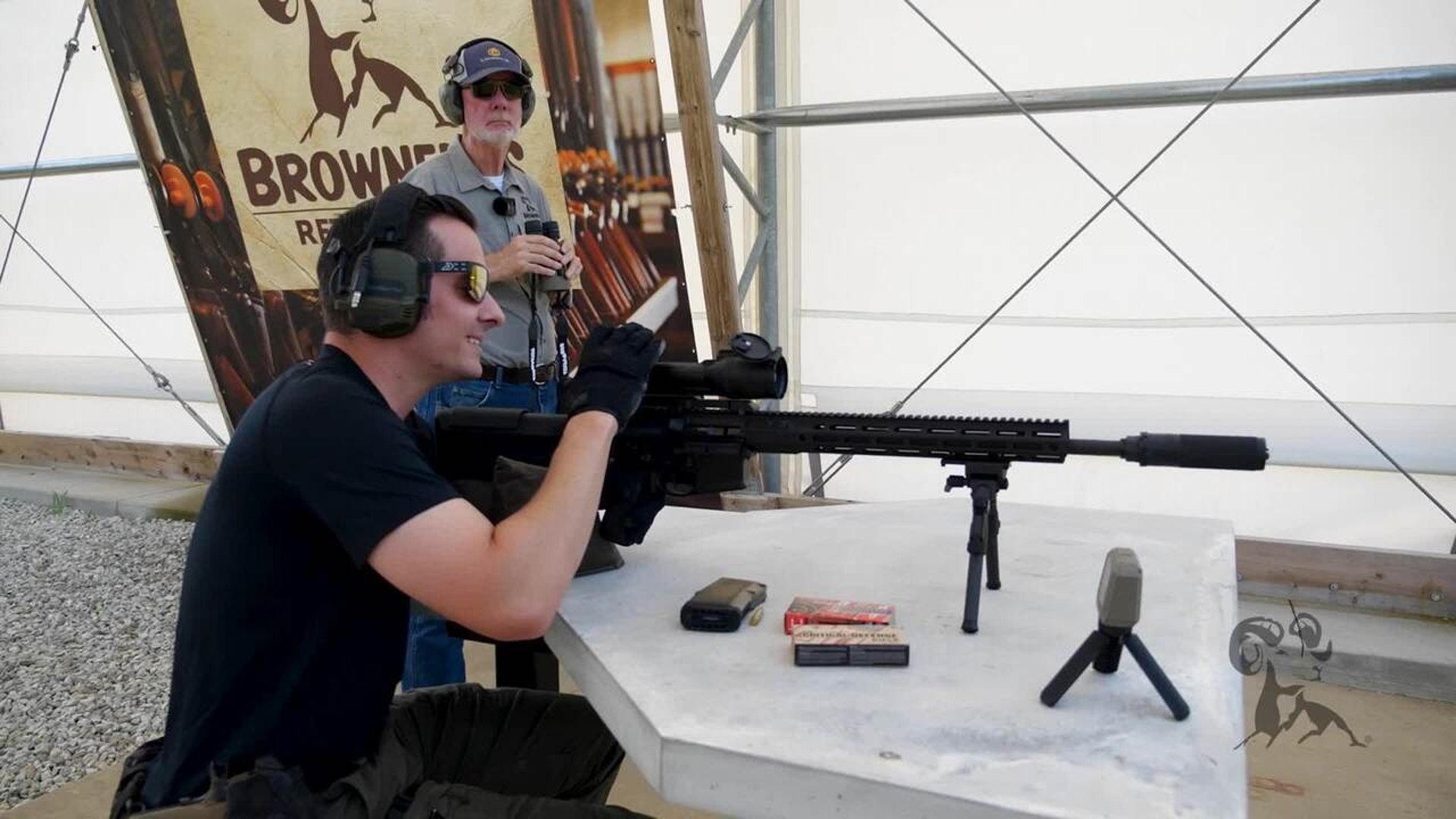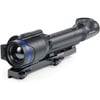Tech Tip: How to Zero Thermal Optics
Intro to Zeroing a Thermal Optic
Steve and Caleb from Brownells head out to the range to demonstrate how to sight in a thermal optic. In this case, they are working with the Pulsar Talion XQ35 Pro, but the process applies to many different thermal scopes. Unlike traditional optics, thermal scopes detect heat signatures, which makes target setup and the zeroing process slightly different.
Target Setup and Heat Signature Options
To sight in a thermal scope, you need a target that produces or reflects heat differently than its background. For this test, Caleb and Steve used a paper target with a one-inch square of aluminum foil placed at the center. While the foil does not radiate heat on its own, it reflects sunlight differently from paper, providing a contrast that shows up clearly in the thermal optic.
Other options include hand warmers or toe warmers, which produce actual heat signatures. These can be effective, but if a bullet clips the edge, the contents spill out and the heat source is lost. For consistency, foil or other reflective materials are often the best choice.
Rifle and Ammunition Setup
The demonstration rifle is an AR-15 chambered in 5.56, though the same process can be applied to any rifle or caliber. For ammunition, they use Hornady Superformance Match 75 grain loads, ideal for accuracy and consistency during sight-in. For hunting applications, Hornady Critical Defense 55 grain .223 ammo is also recommended.
Entering Zeroing Mode
Most modern digital thermal scopes include a zeroing mode. The Pulsar Talion features a one-shot zero function. After firing a shot at the target, the optic allows the shooter to move a secondary reticle to the actual point of impact while keeping the main reticle on the aiming point. Once confirmed, the optic digitally saves the adjustment, resulting in a new zero in as little as one shot.
One-Shot Zero Process
Caleb fires the first round, which impacts off-center. Since the hole is not clearly visible in the thermal optic, they place another piece of foil over the impact point. This provides a new heat-reflective surface for the optic to pick up, allowing accurate use of the one-shot zero feature.
Adjusting Windage and Elevation
Using the menu, the secondary reticle is moved to the bullet impact point while the primary reticle remains on the target center. Adjustments are made for both windage and elevation until the reticle overlays the foil marker. This ensures that the optic is aligned with the rifle’s true point of impact.
Verifying Shots and Fine-Tuning Zero
After the adjustment, Caleb fires again to confirm. The shot impacts near the foil marker, slightly off to the right. A quick menu adjustment brings the reticle into alignment. Firing a three-shot group confirms the new zero is very close. Fine-tuning is always recommended, but the one-shot zero drastically reduces the amount of ammunition needed compared to traditional sighting methods.
Reviewing Target and Shot Placement
On review, the shots landed consistently close to the foil marker. While the setup was effective, Caleb notes that using a true heat source such as a hand warmer might make initial impact points easier to spot. Even so, the process required very few rounds to establish a reliable zero.
Ballistic Calculator Setup and MRAD Holds
The Pulsar Talion XQ35 Pro includes digital features that enhance long-range shooting. Users can input ballistic data, such as muzzle velocity from a chronograph and bullet details, into the optic’s system. In this test, the 75 grain Hornady load clocked near 3,000 feet per second, producing holdover data in MRAD out to 500 yards. This data is stored internally and displayed through the reticle.
Stream Vision App and Ballistic Profiles
The Stream Vision 2 app connects the optic to a smartphone via Wi-Fi. From the app, users can access the ballistic calculator, view and store recorded videos, and configure multiple profiles for different rifles or loads. The app makes it possible to store and recall ballistic tables instantly, making the optic highly adaptable for various hunting or shooting scenarios.
Range Data and Holdover Table
The app-generated ballistic table provides precise holdovers based on the zero distance and muzzle velocity. For example, at 500 yards, the calculated hold for the tested load is approximately 2.23 MRAD, which aligns closely with data from similar rifles. By pairing the optic with a rangefinder, shooters can quickly determine the correct holdover in the field.
Final Target Check and Zero Confirmation
A final trip downrange confirms that the thermal optic is properly zeroed. The foil marker clearly shows the impacts, and the adjustments made with the one-shot zero function bring the group into alignment with the aiming point. The system proves to be efficient, saving both time and ammunition.
Smartphone Reticle Display Feature
An additional feature of the Pulsar Talion is the ability to view the reticle directly through a smartphone connected via the Stream Vision app. This allows a spotter or hunting partner to monitor the optic without looking through it, which can be especially helpful during training or guided hunts.
Closing Thoughts and Tech Line Support
Zeroing a thermal optic is a straightforward process once you understand how digital adjustments work. With tools like one-shot zero, ballistic calculators, and smartphone integration, modern thermals such as the Pulsar Talion XQ35 Pro make the process faster and easier than ever.
For questions about thermal optics, sighting methods, or hunting applications, Brownells encourages shooters to reach out through the Brownells Tech Line for expert support.
Shop all Pulsar Products Here: Pulsar








